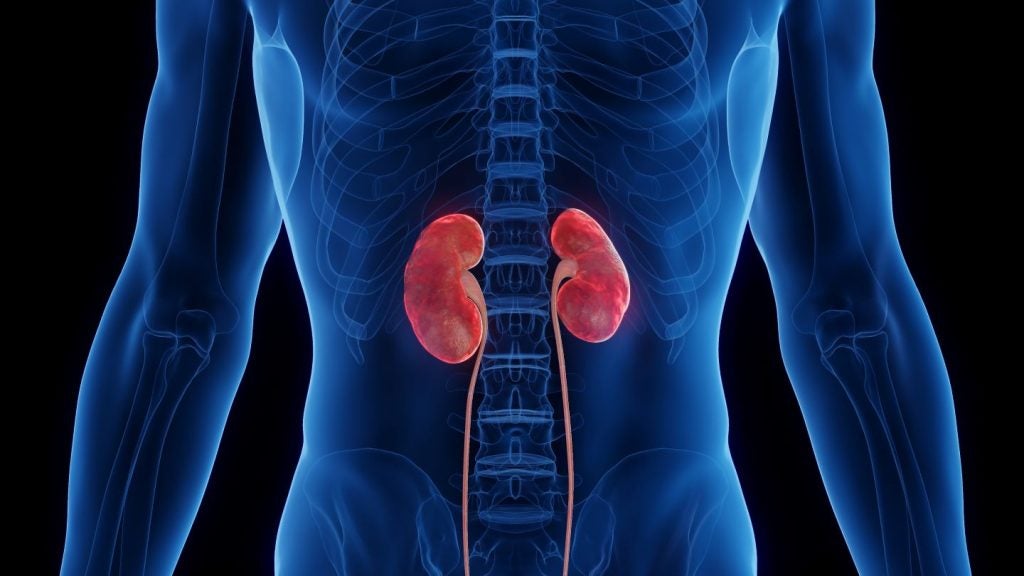Clinical monitoring is a key driver of quality in medical device trials. However, ensuring that quality is inherent within the monitoring approach can be a challenge. What are key components that define quality in monitoring and how do we measure this? How is quality in monitoring achieved and what actions can we take to adequately control risk?
Since the release of the FDA’s industry-wide guidance in August 2013, risk-based monitoring (RBM) is now widely utilized and 100 percent source data verification (SDV), as per the traditional monitoring approach, may become more of the exception than the norm. The RBM guidance recommends a quality risk management approach to clinical trials.1 The evaluation of risk to qulity should be based on scientific knowledge and ultimately link to the protection of the patient. The level of effort, formality, and documentation of the quality risk management process should be commensurate with the level of risk.2
While the conduct of clinical monitoring is only one aspect of having a comprehensive quality system that mitigates risk, the monitoring plans, along with related, documented processes and procedures, should provide the foundation for risk identification, analysis, and evaluation. The opportunity to review key events and monitoring outcomes with a continuum of risk communication and management tools are components of having a quality monitoring program and enable a comprehensive risk assessment to be performed.
Adopting a Flexible Monitoring Approach
Medical device clinical trials are diverse and considerations as to the regulatory impact, technology under study, marketing strategy, and therapeutic area invariably impact monitoring. Thus, having a monitoring approach that enables flexibility and is customized to study risk can help focus resources while controlling risk.
Understanding safety and efficacy endpoints are paramount. With risk identification, it can become a matter of prioritization versus equivalence when performing risk-assessment. Clearly communicating these elements for medical device studies will help determine what to monitor. Clinical monitoring can be complex and having multiple people execute a process with consistency is another area of risk.
How well do you really know your competitors?
Access the most comprehensive Company Profiles on the market, powered by GlobalData. Save hours of research. Gain competitive edge.

Thank you!
Your download email will arrive shortly
Not ready to buy yet? Download a free sample
We are confident about the unique quality of our Company Profiles. However, we want you to make the most beneficial decision for your business, so we offer a free sample that you can download by submitting the below form
By GlobalDataSee Also:
Once risks are identified, a risk analysis should take place in order to determine the quantity of SDV that needs to be applied. Study phases should also be taken into consideration as well as the timelines for subject follow-up. Key risk indicators and monitoring needs can even shift within the same device study as there are changes to phases and follow-up duration. For example, a medical device study with new technology that is quickly enrolling with a high volume of subjects is behaviorally different than that same study two years later. Furthermore, after two years of using that technology, enrollment is complete and the study is in follow-up phase. Early on, adverse events and deviations for missed required testing or study assessments may be paramount. However, further out, particularly when study endpoints are achieved at 12 months and beyond, subject compliance (with follow-up visit completion) and maintaining study windows becomes critical.
Risk Management Tools Vital to Identifying and Mitigating Risk
Risk management tools are generally utilized to facilitate risk-analysis. An effective risk management tool would ideally be centralized, automated, and linked, whether directly or indirectly, to an electronic capture database and to other systems that perform centralized monitoring. This would more readily enable the execution of multiple device studies concurrently, including those with high enrollment. Also, risk management tools, as part of quality monitoring, should have both reactive and proactive capabilities in identifying and mitigating site risk. For example, such tools would not only facilitate identification of sites with compliance issues based on study performance and data entry, but it would also identify potential sites at risk prior to subject enrollment and data entry taking place. This can be done by objectively risk categorizing the more qualitative characteristics of a site.
For example, a research coordinator who has limited, prior experience or an investigator that has not previously participated in other studies with the sponsor. Another characteristic that drives quality in systems is the ability to provide analysis both real-time and comparatively across different time intervals. For example, for a five-year medical device clinical study in year three of follow-up, can the system provide information not only on how that site ranks today, but how they ranked six months ago, one year ago, and can a comparative analysis be performed?
Risk evaluation of monitoring should ideally measure what has been monitored, the resource utilization required to accomplish monitoring objectives, the frequency of the monitoring required, as well as the response intervals to key study site milestones, such as first subject enrollment, device implant, or randomization.
In reference to what has been monitored, this is generally a review and compilation of monitoring findings metrics in terms of volume and type of findings for a given site so that trending can take place. For resource utilization, quantifying the amount of time spent on monitoring activities for a specific study site and number of staff at a given time, provide insight into monitoring efforts, efficiencies, and potential gaps.
Monitoring response intervals should be documented and tracked to focus and scale efforts appropriately. When monitoring response intervals or related monitoring activities deviate from the monitoring plan or standard operating procedure, this should be documented along with any applicable corrective action. Automation of monitoring activity tracking, and the ability to proactively implement monitoring triggers with system alerts, contributes to overall monitoring quality.
Developing Monitoring Plans
The processes and procedures detailed in monitoring plans provide the foundation and structure for quality monitoring within an organization. The primary challenges are determine the key elements and how prescriptive monitoring plans and procedures need to be. For example, the sponsor has a monitoring plan that states a visit will occur at each site every 30 days throughout the duration of the study. More often than not, visits occur at intervals greater than 30 days, and as a result, the sponsor fails to comply with their own plan. In such a case, in the event of an audit, that could result in a finding or citation by the relevant regulatory authority for that geographic region. Incorporating flexible language and utilizing guidance documents can moderate having plans and procedures that would otherwise be too stringent to adhere to.
Key elements of monitoring procedures and plans generally include the following:
- Scope
- Purpose
- Responsibility
- Applicable regulations and regulatory guidance
- References to related organizational procedures and document templates
- Monitoring approach for regulatory and data review
- Site compliance management
- Communication of monitoring activities
Monitoring procedures and plans need to define the extent to which they are applicable and clearly define responsibility and accountability. With the globalization of medical device studies, it is necessary to understand the geographic regions in which the study is being conducted and that local regulations are incorporated. Templates for items, such as monitoring reports and communications can drive standardization. Other measures that can reduce process variability include process automation, training, and centralizing report review and trending of findings. How a study is monitored and rationale behind the monitoring approach should be captured within the monitoring plan. Ideally, the plan should preferably be study-specific and developed upstream along with the inception of the protocol and study database.
Monitoring plans and procedures need to incorporate minimum requirements set forth by applicable regulations. For FDA-regulated medical device studies, there is specific language within the regulations regarding sponsor responsibilities and securing investigator compliance. Documentation of monitoring visits, corresponding findings, and related communication thereof – both within the organization and to clinical study sites – should be driven by monitoring plans and procedures. Furthermore, these plans and procedures should detail what documents and templates are to be used, as well as the document creation, review, and approval matrix that is to be followed.
Maintaining Quality in Clinical Monitoring
Lastly, once all components have been incorporated into a quality monitoring system, how do we measure and ensure that quality occurs on a continuum? With a quality monitoring system in place, monitoring activity metrics can be evaluated on an ongoing basis. For instance, setting goals and threshold values for completion of key monitoring activities such as:
- Average time a site visit occurs after the first subject enrollment
- Timelines for monitoring document completion
- Resolution time for open monitoring findings and discrepancies
- Volume of data monitored vs. unmonitored at a given time point
These metrics primarily reflect utilization, productivity of resources, and risk mitigation. However, if the question is what impact does monitoring have on a given medical device study, that would require a more in-depth analysis and quantification of the type and volume of pertinent monitoring findings and discrepancies. For instance, the reported occurrence of device related events is much lower than the expected rate. This may prompt inquiry as to which sites did not have any monitoring findings for device events, the enrollment status for those sites, and the degree of monitoring that has been completed to date.
The frequency and timing of performing quality measurements and evaluations should be specified in advance. Cross-functional teams may need to be formed for periodic assessments, and both findings and action items should be documented. For example, a quarterly meeting is conducted to assess outliers to monitoring frequency and SDV completeness that have been pre-determined for a given study. Are meeting minutes maintained, how are quality-related findings and action items documented and tracked for resolution? Maintaining quality in clinical monitoring for medical device trials is not without its challenges. Nevertheless, by creating a quality monitoring system, device products can more efficiently and effectively attain regulatory approvals to be marketed while ensuring the protection of human subjects.
References:
1) Oversight of Clinical Investigators, A Risk-Based Approach to Monitoring. (Aug 2013) – https://www.fda.gov/downloads/Drugs/…/Guidances/UCM269919.pdf
2) ICH Quality Risk Management Guideline – Q9. (Nov. 9, 2005) – http://www.ich.org/products/guidelines/quality/article/quality-guidelines.html







